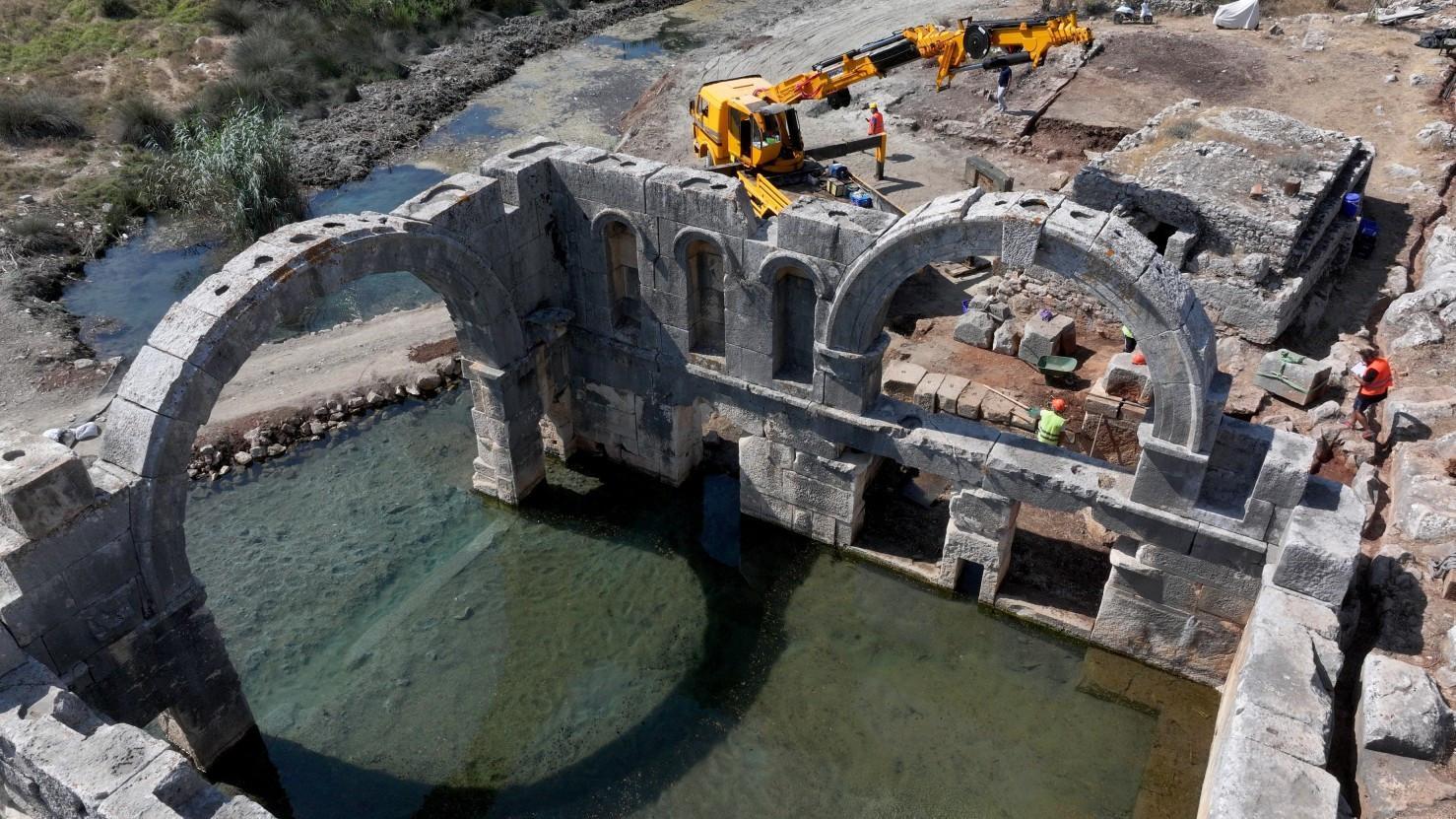
A 1,850-year-old nymphaion (a monument built over a spring or fountain) in the ancient city of Myra in Antalya’s Demre district is set to regain its original function after centuries, as ongoing excavations and restoration works aim to bring the monumental structure back to life.
Located between Myra and its port, Andriake, in what is today a former industrial zone, the site has gained momentum in recent years after industrial activity ceased in the area. The nymphaion, dated to the 2nd century A.D. during the Roman era, was built over a natural spring rich in magnesium, iron, sulfur and phosphorus, which distinguished it from other ancient water structures both in function and architectural plan.
Archaeologists believe that together with its surrounding aqueducts, baths and cisterns, the structure once formed part of a “healing water complex.” The project is planned to be completed by the end of 2026 and integrated into a new archeopark, where the nymphaion will resume its original role as a source of health and wellness.
‘Monumental architecture’
Prof. Nevzat Çevik, head of the Myra excavations, told Anadolu Agency that the site is considered a type of “health water” facility established outside the city during the extensive construction projects of the Hadrianic period.
“The region is not only home to the nymphaion, but also to baths, cisterns and aqueducts,” Çevik said, noting that the main source of the water still used by locals in Demre today — known as ‘Burguç’ and entered for healing purposes — lies directly beneath this structure.
He described the building as a monumental piece of Roman architecture built entirely from cut stone and continuously fed by a natural mineral spring. “It is a rich water containing iron, magnesium, phosphorus and sulfur, constantly bubbling from underground,” he said. “It is a multi-entranced structure, with three gates on both the east and west sides connecting to different sections, creating a complex traffic arrangement. We are talking about an organically connected and visually integrated area.”
According to Çevik, while various ancient water structures have been documented, no parallel example exists. “This is unique, both in function and in architecture, because it was built directly over a healing spring,” he emphasized.
The nymphaion was constructed using a hybrid technique of carving into bedrock and building with cut stone, he explained. Its use likely ended in the 7th century, at the same time as Andriake harbor, which silted up and lost its function.
Swimming among ruins
Çevik underlined the difficulties of the excavation, pointing to the high groundwater levels that require daily pumping. “Every day we pump out the water by hand, only for it to refill by the next morning. It is challenging but rewarding,” he said.
With the industrial zone now cleared, the area is expected to become a major archeopark attraction. “It will regain the function it had 1,850 years ago in the 21st century A.D. Locals and visitors alike will be able to swim in the healing waters while exploring the ruins. Even the thought of it is thrilling. We hope to complete it by the end of 2026,” he added.
The excavations are being carried out under the Turkish Culture and Tourism Ministry’s “Heritage for the Future” project. Çevik noted that the works at Myra and Andriake, alongside the revival of the nymphaion, aim to leave behind a distinctive legacy for future generations.